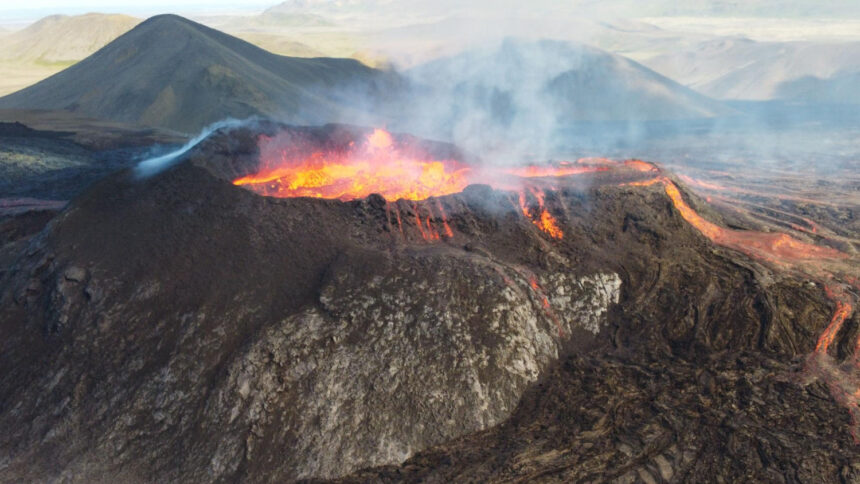Did you know volcanoes come in more shapes than the iconic cone? The types of volcanoes are as diverse as the fiery forces that create them.
⫸ Introduction
Volcanoes are awe-inspiring windows into the raw power of our planet. These openings in the Earth’s crust offer glimpses of the molten world beneath our feet. But they’re not just fiery mountains – volcanoes showcase incredible diversity, with different types of volcanoes boasting unique stories and forms. Let’s delve into what makes these geological wonders so remarkable:
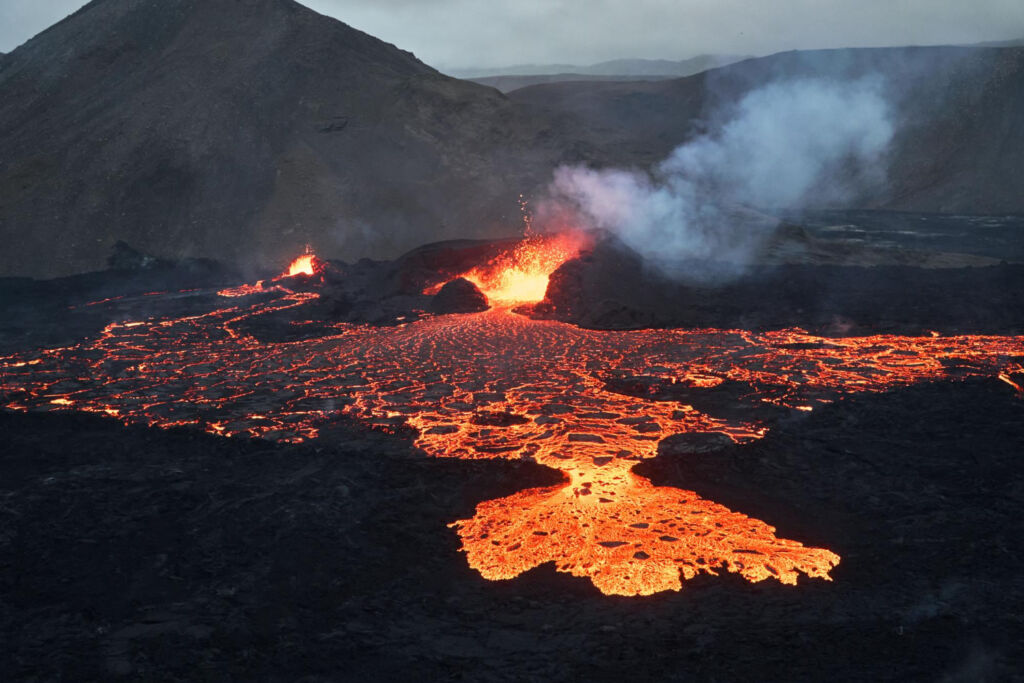
- What are Volcanoes? Volcanoes form when magma (hot, molten rock) from deep within the Earth rises and erupts onto the surface. This eruption can create mountains, craters, and vast lava flows.
- The Allure of Volcanoes: These fiery giants capture our imagination. They symbolize the Earth’s dynamic nature and ability to create and destroy.
- Diverse Forms: Not all volcanoes look alike! Different types of volcanoes exist, from small, steep-sided cinder cones to massive shield volcanoes. Understanding these types helps us appreciate their unique features.
- The Factors Behind Diversity: The type of volcano that forms depends on several factors, including the composition of the magma and the tectonic setting where it erupts.
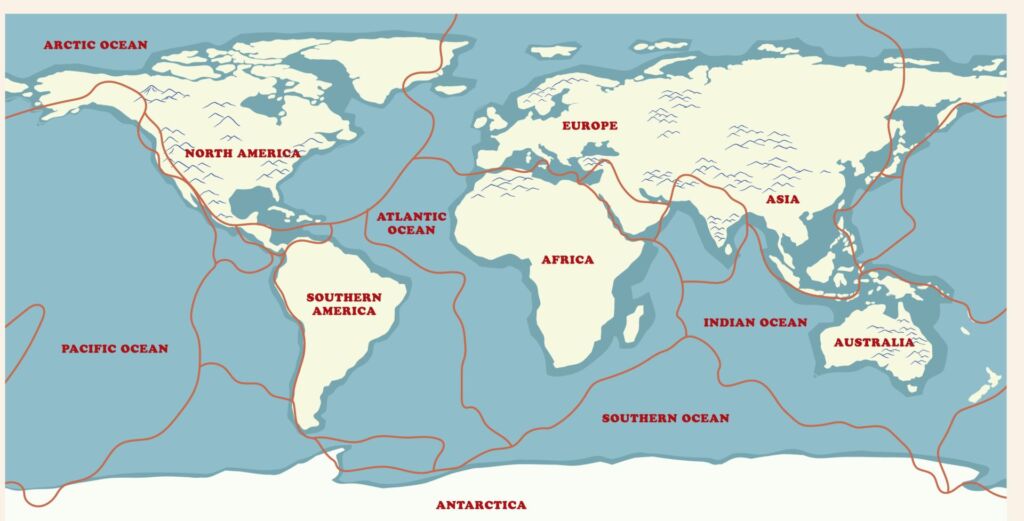
⫸ Why are there different types of volcanoes?
From gently flowing lava rivers to earth-shattering explosions, volcanoes showcase an incredible range of eruptive styles. But why do we have this diversity? The answer lies in the fiery depths below the Earth’s surface and the dynamic forces of plate tectonics.
The Role of Magma Composition
- Magma is molten rock beneath the Earth’s surface containing a mixture of melted minerals, gases, and sometimes crystals.
- Silica Content: Magma with high silica content is thick and viscous (sticky). This traps gases, leading to pressure buildup and explosive eruptions.
- Viscosity: High-viscosity magma resists flow, creating steep-sided volcanoes like composite volcanoes. Low-viscosity magma flows easily, forming broad, gently sloping shield volcanoes.
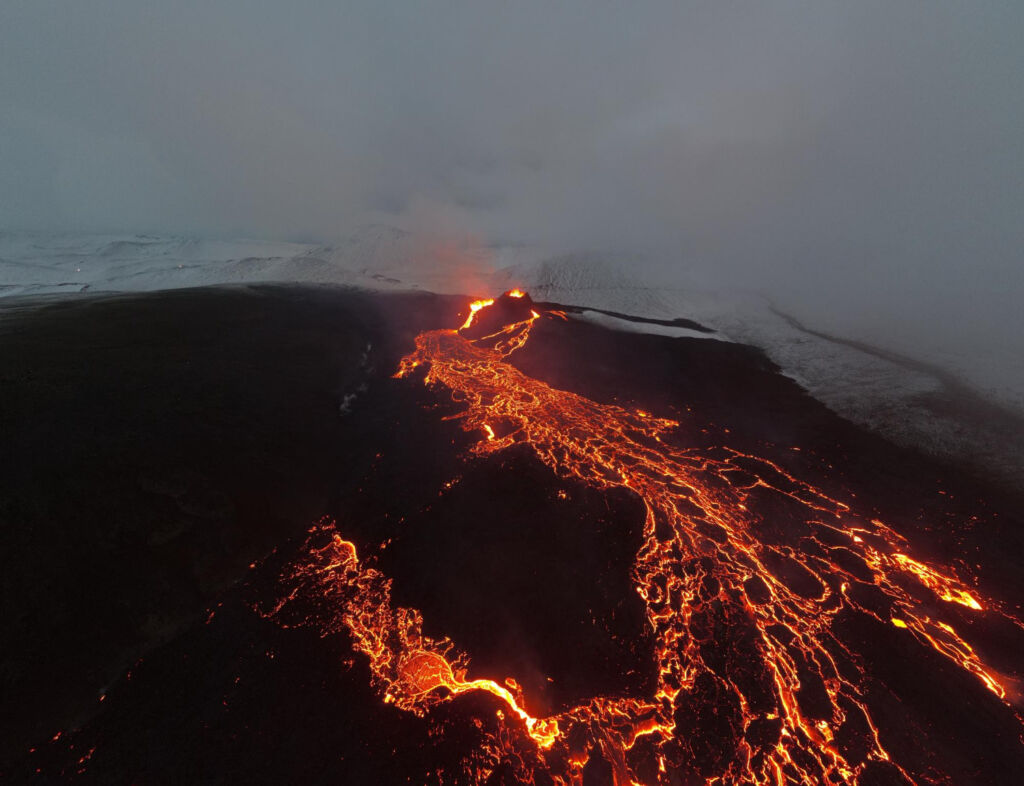
Tectonic Settings
- Where Volcanoes Form: Most volcanoes occur at tectonic plate boundaries – areas where Earth’s massive plates collide, pull apart or slide past each other.
- Subduction Zones: Where plates collide, one plate dives beneath another. Water released from the sinking plate lowers the melting point of the rock above, creating highly viscous magma that can lead to explosive volcanoes.
- Divergent Boundaries: Where plates pull apart, magma rises easily from the mantle. This magma is often less viscous, creating effusive eruptions and shield volcanoes.

⫸ Types of volcanoes according to shape
Volcanoes are awe-inspiring geological features that shape our planet. Beyond the classic cone image, there’s a surprising variety of volcanic forms, each revealing the complex interplay of magma, geology, and eruptive force.
Cinder Cones
- Description: Cinder cones are the simplest and most common of the types of volcanoes. Their distinctive shape – a steep-sided cone – gives them their name. They resemble a giant pile of cinders or ash.
- Formation: They’re built mostly from pyroclastic material, which includes fragments like volcanic ash, cinders, and larger rocks called bombs, ejected explosively from a single vent.
- Examples:
- Paricutin (Mexico): This famous example grew dramatically in a farmer’s cornfield over several years of eruptions in the 1940s.
- Sunset Crater National Monument (USA): This Arizona landmark is a classic cinder cone.

Composite Volcanoes (Stratovolcanoes)
- Description: If you picture a volcano, you’re likely imagining a composite volcano! The majestic giants are known for their tall, conical shapes and often snow-capped peaks.
- Formation: These types of volcanoes are built up in alternating layers. Viscous lava flows harden, followed by explosive eruptions that scatter ash and rock debris. The cycle repeats, creating the stratified structure.
- Examples:
- Mount Fuji (Japan): Its iconic beauty makes it a revered symbol of Japan.
- Mount Vesuvius (Italy): Famous for the devastating eruption that buried Pompeii in 79 AD.
- Mount St. Helens (USA): Its 1980 eruption demonstrated the explosive power of stratovolcanoes.
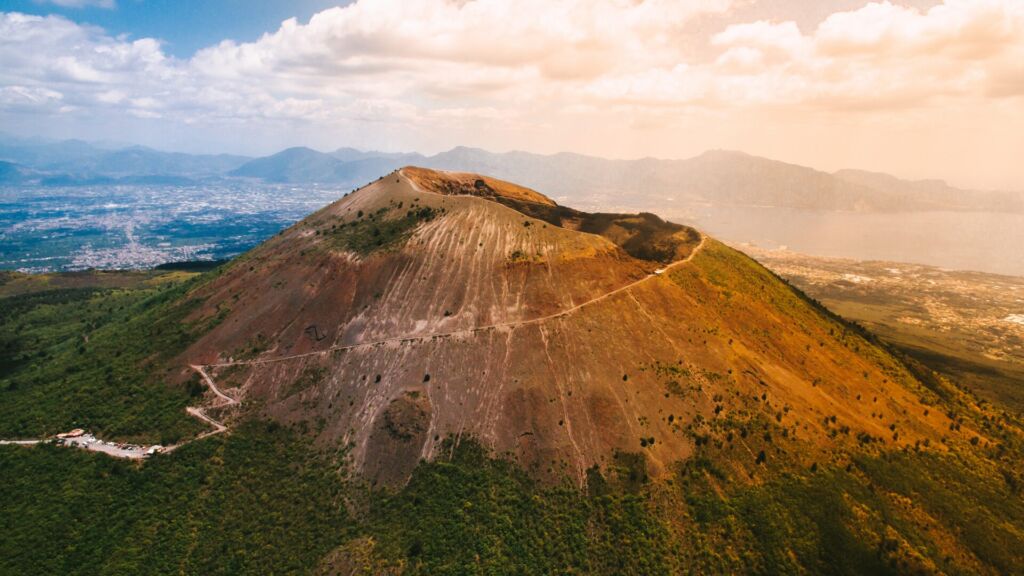
Shield Volcanoes
- Description: Shield volcanoes are characterized by broad, gently sloping profiles resembling a warrior’s shield on the ground. They can be truly enormous in size.
- Formation: They’re formed by highly fluid lava that flows smoothly over long distances, gradually forming the shield shape. These eruptions are less explosive than those of other types of volcanoes.
- Examples:
- Mauna Loa and Kilauea (Hawaii): These volcanoes form the Big Island of Hawaii.
- Olympus Mons (Mars) is the largest volcano in the solar system. It’s a vast shield volcano that dwarfs even Earth’s giants.

⫸ Other Volcanic Landforms
Beyond the classic types of volcanoes, the Earth’s fiery forces carve a range of other fascinating structures. These landforms showcase the consequences of intense volcanic activity and the ever-changing face of our planet.
Calderas
- Calderas are vast, basin-like depressions, much larger than standard volcanic craters.
- They form when a volcano experiences a massive eruption, causing its magma chamber to be partially or fully empty.
- The unsupported summit then collapses inwards, creating a massive depression.
- One of the most famous examples is the Yellowstone Caldera in the USA, a supervolcano with vast potential for future eruptions.

Lava Domes
- Lava domes are rounded, bulbous mounds formed from incredibly thick and viscous lava.
- This lava is too sticky to flow easily and piles up around the vent.
- Lava domes can grow within existing craters or form entirely new features.
- Lassen Peak in California, USA, is a well-known example of a lava dome.
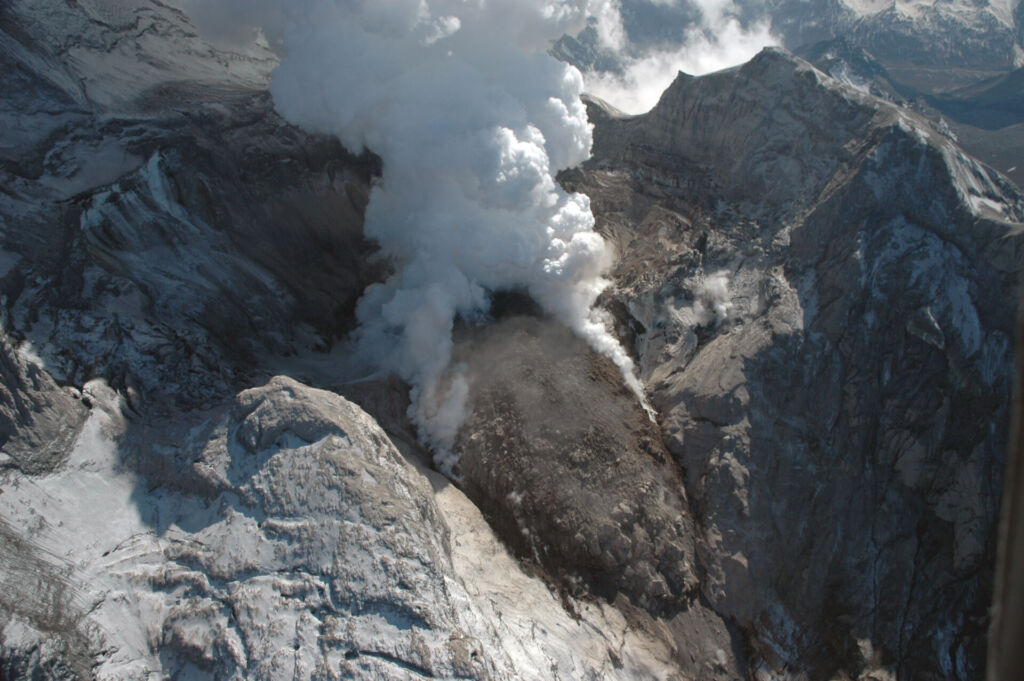
Submarine Volcanoes
- As their name suggests, submarine volcanoes erupt beneath the ocean’s surface.
- They are commonly found along mid-ocean ridges, where tectonic plates pull apart, and near boundaries where plates collide.
- Submarine volcanoes play a vital role in shaping the ocean floor.

Volcanic Fissures
- Volcanic fissures are linear cracks or vents in the Earth’s crust.
- They form when tectonic stresses cause the crust to thin and break.
- Fissure eruptions often create broad lava flows instead of centralized cones seen in other types of volcanoes.
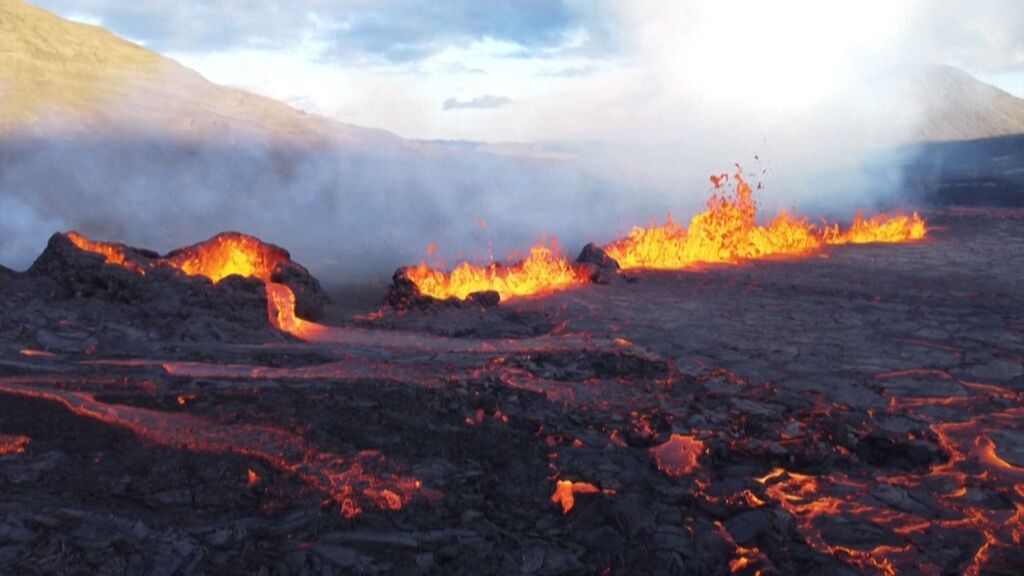
Eruption Styles and Volcanic Features
- Eruption styles vary: effusive eruptions produce flowing lava, while explosive eruptions violently eject ash and rock.
- Volcanoes create unique features like lava tubes (cave-like channels formed by cooled lava) and volcanic craters (depressions at the summit).
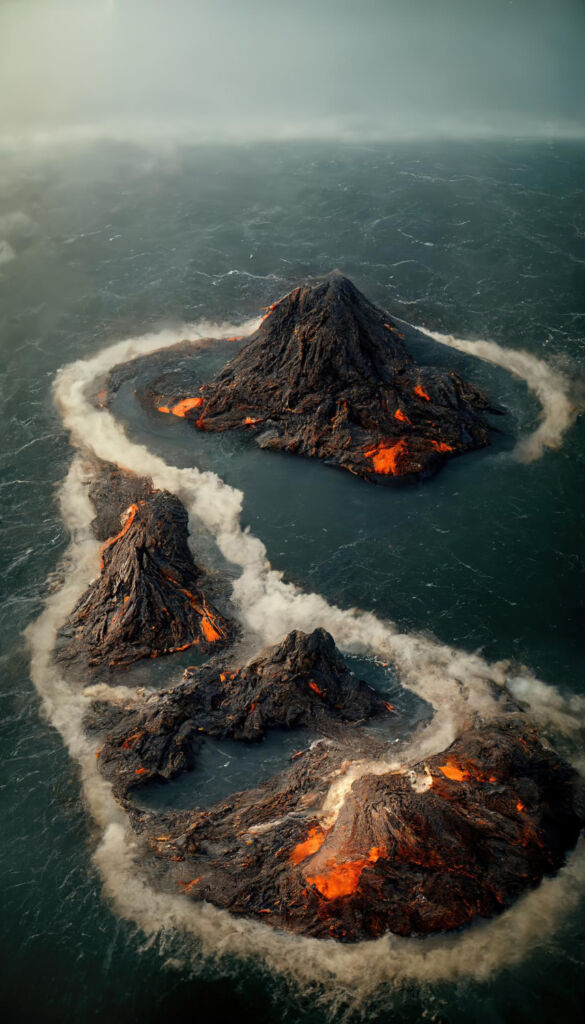
⫸ Conclusion
From the steep-sided cinder cones to the expansive shield volcanoes, the world of volcanoes is a testament to Earth’s dynamic power. Understanding the types of volcanoes helps us grasp the incredible forces constantly shaping our world.
- Main types of volcanoes: Cinder cones, composite volcanoes (stratovolcanoes), and shield volcanoes are among the most common forms, each with distinctive characteristics.
- The dynamic nature of geology: Volcanoes remind us that the Earth is never static but constantly in the process of creation and transformation.
- The awe-inspiring power of volcanoes: Witnessing their eruptions fills us with awe and respect for the vast forces within our planet.
- Further Exploration: If you’re eager to learn more about volcanoes, numerous resources exist, including the websites of the Smithsonian’s Global Volcanism Program and the United States Geological Survey (USGS).

